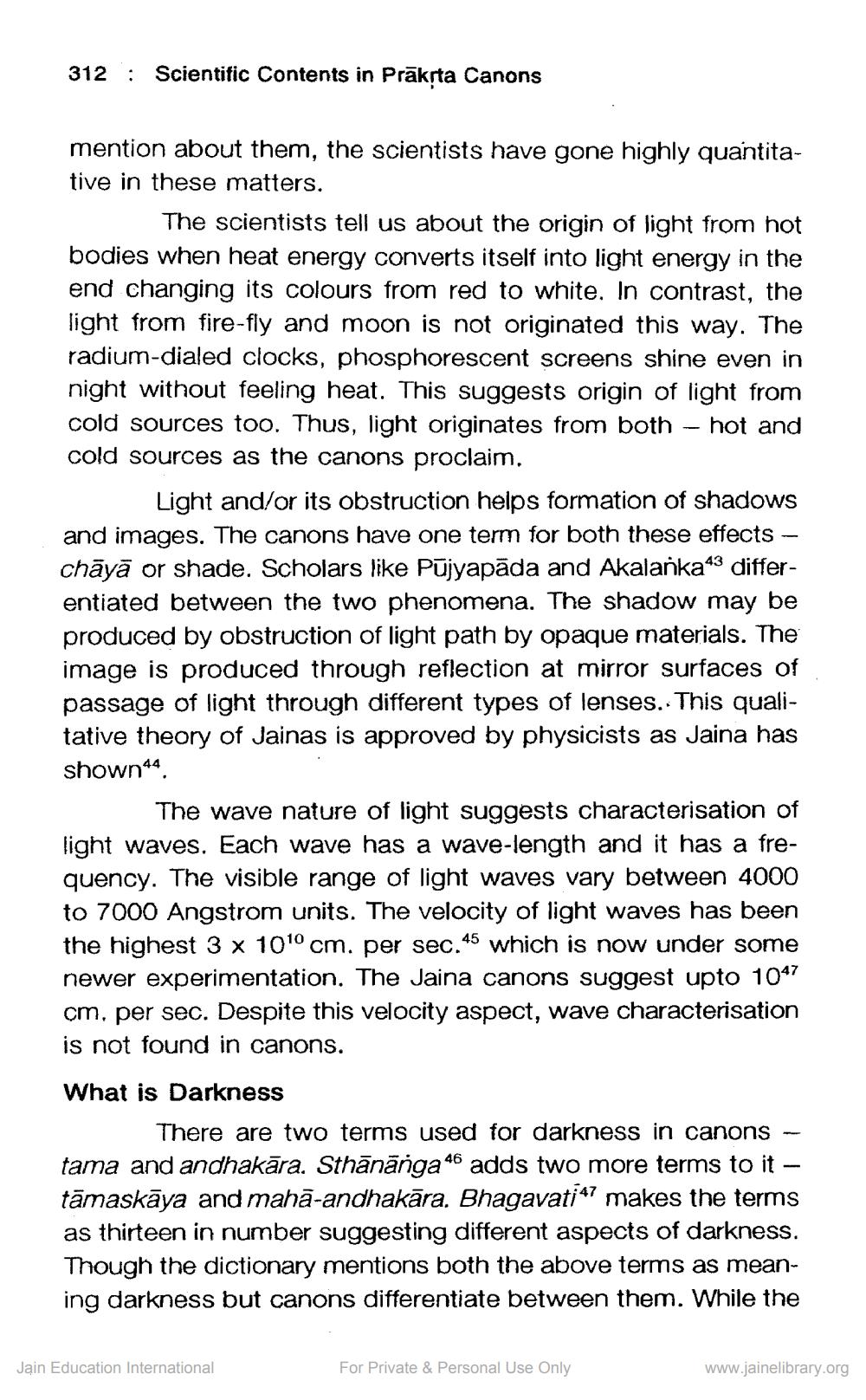________________
312 : Scientific Contents in Prākrta Canons
mention about them, the scientists have gone highly quantitative in these matters.
The scientists tell us about the origin of light from hot bodies when heat energy converts itself into light energy in the end changing its colours from red to white. In contrast, the light from fire-fly and moon is not originated this way. The radium-dialed clocks, phosphorescent screens shine even in night without feeling heat. This suggests origin of light from cold sources too. Thus, light originates from both - hot and cold sources as the canons proclaim.
Light and/or its obstruction helps formation of shadows and images. The canons have one term for both these effects - chāyā or shade. Scholars like Pūjyapāda and Akalanka43 differentiated between the two phenomena. The shadow may be produced by obstruction of light path by opaque materials. The image is produced through reflection at mirror surfaces of passage of light through different types of lenses. This qualitative theory of Jainas is approved by physicists as Jaina has shown44
The wave nature of light suggests characterisation of light waves. Each wave has a wave-length and it has a frequency. The visible range of light waves vary between 4000 to 7000 Angstrom units. The velocity of light waves has been the highest 3 x 1010 cm. per sec.45 which is now under some newer experimentation. The Jaina canons suggest upto 1047 cm, per sec. Despite this velocity aspect, wave characterisation is not found in canons.
What is Darkness
There are two terms used for darkness in canons - tama and andhakāra. Sthānānga 46 adds two more terms to it - tāmaskāya and mahā-andhakāra. Bhagavati“? makes the terms as thirteen in number suggesting different aspects of darkness. Though the dictionary mentions both the above terms as meaning darkness but canons differentiate between them. While the
Jain Education International
For Private & Personal Use Only
www.jainelibrary.org




